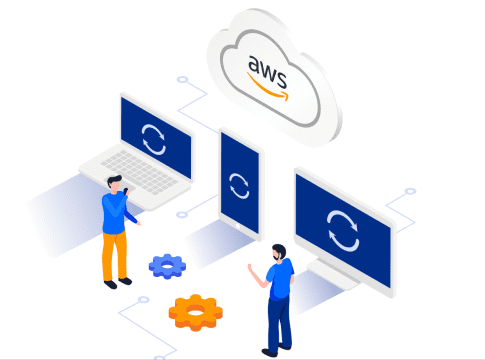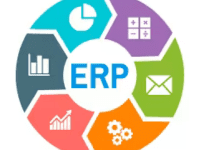AWS ERP Architecture and Best Practices – Enterprise Resource Planning (ERP) systems play a vital role in streamlining business operations, optimizing workflows, and enhancing productivity. As organizations increasingly move their IT infrastructure to the cloud, AWS (Amazon Web Services) offers a robust platform for building scalable and reliable ERP architectures. In this article, we will explore AWS ERP architecture and delve into the best practices that ensure its effective implementation.
Understanding AWS ERP Architecture

ERP refers to integrated software applications that centralize data and processes across various departments, including finance, human resources, and supply chain management. By leveraging AWS for ERP architecture, organizations can benefit from increased scalability, agility, and cost-efficiency.
Designing an Effective AWS ERP Architecture
When designing an AWS ERP architecture, several considerations come into play. It’s essential to create a scalable and reliable solution that can handle growing workloads and maintain high availability. AWS services such as EC2, RDS, S3, and Lambda play a crucial role in building a robust infrastructure.
Implementing Best Practices for AWS ERP Architecture
Security and compliance are paramount when it comes to ERP systems. Implementing best practices for data storage, backup, disaster recovery, monitoring, logging, and performance optimization ensures the integrity and reliability of the architecture.
Also Read : Mengenal Tentang Sistem ERP (Enterprise Resource Planning) dan Contohnya
Optimizing Performance in AWS ERP Architecture
To deliver optimal performance, it is necessary to focus on various aspects such as application response times, caching mechanisms, content delivery networks, and database optimization. By leveraging AWS services, organizations can enhance the overall performance of their ERP systems.
Scaling and Flexibility in AWS ERP Architecture
AWS Auto Scaling and Elastic Load Balancing are powerful tools for scaling ERP architectures based on demand. By adopting elastic and agile strategies, organizations can handle increased workloads and achieve flexibility in their ERP systems.
Cost Optimization in AWS ERP Architecture
Cost optimization is a critical factor in AWS ERP architecture. By adopting cost-effective provisioning approaches, utilizing tools like AWS Cost Explorer and Trusted Advisor, and managing resource usage efficiently, organizations can optimize their AWS expenses.
Ensuring Security and Compliance in AWS ERP Architecture
Securing ERP systems is of utmost importance. Identity and access management, encryption, and network security measures should be implemented to protect sensitive data. Compliance considerations for various industries need to be taken into account when designing an ERP architecture on AWS.
Case Studies and Success Stories
Real-world case studies highlight successful implementations of AWS ERP architecture. Organizations across industries have achieved remarkable outcomes by leveraging AWS services, enhancing productivity, and streamlining their business processes.
Conclusion
AWS ERP architecture offers organizations a scalable, secure, and cost-effective solution for managing their ERP systems. By following best practices and leveraging AWS services, businesses can optimize performance, ensure high availability, and achieve compliance. Embrace the power of AWS ERP architecture and unlock new levels of efficiency and productivity.
FAQs
- What is AWS ERP architecture?
- AWS ERP architecture refers to the design and infrastructure built on Amazon Web Services to support Enterprise Resource Planning systems.
- How does AWS help in implementing ERP architecture?
- AWS provides a robust and scalable platform for hosting ERP systems, offering benefits such as increased flexibility, agility, and cost-efficiency.
- What are the best practices for AWS ERP architecture?
- Best practices include designing for scalability and reliability, optimizing performance, ensuring security and compliance, and focusing on cost optimization.
- How can organizations optimize costs in AWS ERP architecture?
- Organizations can optimize costs by adopting cost-effective provisioning approaches, utilizing AWS cost management tools, and efficiently managing resource usage.
- Can you provide examples of successful AWS ERP implementations?
- Yes, several organizations have successfully implemented AWS ERP architecture, resulting in improved productivity, streamlined processes, and enhanced business outcomes.




